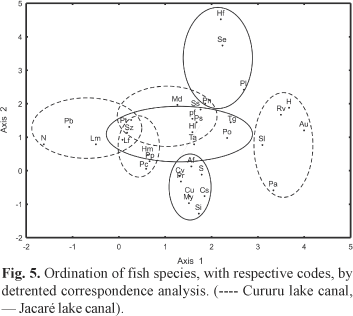The functioning of large river systems with adjacent floodplains is strongly influenced by the flood pulse. This phenomenon is the main structuring force for the biota, including fish communities that use floodplain environments for spawning, feeding, nursery and refuge. In floodplains and in the entire basin, the volume of water controls internal flows. During rising water, the high discharge of the river acts as a natural barrier to the canals that connect floodplain lakes and the Solimões River, because the water flows from river to lake. During the dry period, there is a reduction of discharge and the water flow is reversed or stationary. These canals are environments with distinct ecological characteristics such as differentiated limnology and water level variation intensely affected by the hydrological cycle. Therefore, we surveyed the influence of the flood pulse on fish communities that inhabit two canals that connect floodplain lakes to the Middle Solimões River. Particularly, we evaluated the hypothesis that the Solimões River flow direction is not perfectly parallel to its banks, which creates peripheral flows that direct water from the rivers to the floodplain lake canals. Our analysis indicated that the seasonal pattern is stronger than the spatial. Beside this, we observed that the positions of the canals in relation to the main river flow somehow affect the fish assemblages. Finally, we conclude that the flood pulse is the main structuring force acting on these fish communities.
Amazon; Seasonality; Freshwater fish








